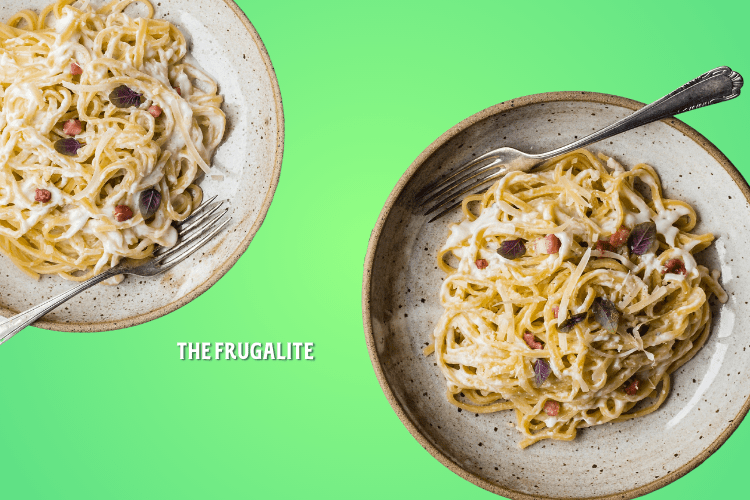(Psst: The FTC wants me to remind you that this website contains affiliate links. That means if you make a purchase from a link you click on, I might receive a small commission. This does not increase the price you’ll pay for that item nor does it decrease the awesomeness of the item. ~ Daisy)
These days, money is tight for just about everyone. With the job market in shambles and inflation constantly rising, it can be hard to keep up. More and more people are needing to rely on resources like food banks. I myself have multiple times in the last couple of years to help stretch my dollar that little bit further when I was unable to make ends meet on my own.
That being said, stretching your dollar and making the most out of everything you do have is hugely important. While each of these tips on their own may not save you a fortune every month, it adds up. The more ways you can save a dollar here and 50 cents there, well, it begins to snowball. Not only that but using tips like these also means you’re getting the most out of your groceries and wasting less.
Pasta Water
I am someone who loves to make sauces from scratch. When it comes to creamy sauces, I’d often start with a basic bechamel or something similar to homemade gravy. I’d melt fat, usually butter, or if I was cooking with a fatty meat, the grease left from that, whisk in flour, and slowly add in the liquid of my choice, which was often broth, and sometimes adding a splash of cream if it was for a creamy sauce.
A couple of months ago, I started changing my process. When I’m cooking my noodles, I have started using less water, only as much as is needed. Sometimes, this means I have to add a little extra water partway through the cooking process to ensure the noodles stay covered. I also like to season this water, sometimes just with a little salt, or I’ll throw in a whole clove or 2 of peeled garlic (which I save and chop after to go in the sauce) and a little pepper. If there is a seasoning I intend to use across all my dishes within the meal, sometimes I put that in the water as well, just to tie all the flavors together.
This gives both the noodles and the water more flavor. When it comes time to strain the pasta water, I put a clean mug in the sink and pour as much water as possible into it. I rarely have more than one mug full of water left over.
How it Works
Because the water has cooked the noodles, which are full of natural starch, this water will be a bit thicker and, when simmered down, will also help to thicken whatever sauce I’m making. It’s similar to the process of how adding raw potatoes or rice to cook to a soup or stew can help to thicken it.
Sometimes, I can skip the flour and the fat for the base of my sauce altogether. Sometimes, I need a fraction of the amount I’d normally require. While it’s not a fortune in savings, I tend to do one or two pasta or baked dishes a week using this method, and even just feeding one, it adds up!
Feta Cheese Brine
This is a recent discovery for me, but one that I’ve fallen in love with. While I don’t get feta super often, every once in a while, I get a craving for it. I was nearing the end of my current container and was eyeing the brine the brick had been soaking in. It must have a ton of flavor! I thought, so I googled it, like one does. There are dozens of recipes where you can incorporate the salty feta water to enhance the flavor. Because the liquid also tastes so much like the cheese itself, if it’s a case where the feta is incorporated into the same dish, you can get away with using a much smaller amount of cheese while still having just as much flavor.
Fair warning, though, it is very salty, and a little goes a long way. Be careful not to use too much, or add it in a little at a time before adding another salt or salty food, and go by taste. It’s much easier to add salt than take it away.
I actually brought this full circle the other day and put a little bit of feta brine in my pasta water while cooking the noodles, and then turned around and used the mix to make a creamy feta sauce to go over noodles, black beans, broccoli, and a little extra bacon I had. Let me tell you, it was delicious, and I’ll definitely be saving the rest of the brine for more cooking experiments!
Other Ways to Use It
While I’ve yet to attempt these myself, it looks like brine from feta or other types of food can be good for:
- marinades
- salad dressings
- quick pickling or canning
- a splash while cooking things like potatoes, beans, pasta, rice, or other grains.
A Few Other Items
Here are a few other ways you can incorporate kitchen scraps that are often thrown out into extra food or food savings:
- Vegetable and meat scraps can be turned into broth or soup stock.
- Bacon grease can be saved and used for cooking or pan-frying items or to replace butter in baking recipes. (My random makes the best ginger snap and peanut butter cookies using leftover bacon grease!)
- Broccoli stalks, when peeled, can be diced up and tossed in things like stir-fries and soups.
- Liquid from canned chickpeas and beans.
- Fruit Peels can be turned into jams and marmalades.
What Kitchen Scraps Do You Reuse in the Kitchen?
While I’ve named a few that I use on a regular basis, frugalites are a resourceful bunch! In what ways do you cook with things from your kitchen that most would just toss? What tips do you have to stretch your food and food scraps just that little bit farther? Are there any on the list that you haven’t heard of and want to try?
Let’s chat about it in the comments!
About Chloe Morgan
Chloe Morgan grew up living with a tight budget. In her late teens and early 20’s, all the lessons she’d learned started to slip, like it does for many college-age students on their own for the first time with their first credit card. As she’s gotten older, she’s started to deal with the repercussions and has taken on a frugal way of living, keeping her costs low, as she pays off debt and saves for her future. Chloe lives in Northern Ontario, Canada, with her dog, Rhea.
Check out her work on TheOrganicPrepper.com and TheFrugalite.com where she writes about food, frugality, finances, and self-reliance, or her work on Medium, where she writes about lifestyle, mental health, and writing.












10 thoughts on “7 Things You’re Probably Throwing Out that Can Save You Money in the Kitchen”
I love these ideas! My dad will take radish tops and put them in old pickle brine to make pickled radish tops, which he loves. When I make fermented pickles I will often reuse the brine to start new batches. Many liquids can be used in bread, such as whey poured off from yogurt. I have also used yogurt poured off from whey to inoculate fresh yogurt since it still has all the bugs in it to start the reaction. Finally, composting can supplement garden dirt and that can be pretty expensive!
What great ideas! I’ve never tried pickled radish tops, but that sounds tasty! Thanks for sharing!
Great ideas, Chloe! I particularly like the feta brine idea and plan to try that when I use the block of feta sitting in my fridge. Perfect timing! 🙂
Two of my favorites:
Save the water from cooking potatoes for mashed potatoes and use it as the water in a bread recipe. You could use any cooking water, but I save the water from other vegetables for soup stock, so usually the potato water is used for making bread. If you don’t have time to use it right away, portion it out into the size you need for your favorite bread recipe so it’s ready to go and pop it in the freezer.
I use pickle juice when cooking a roast in the crock pot. A little goes a long way and adds a ton of flavor. I typically use dill pickle juice, but have used bread and butter pickle juice before with good results also. I typically use about 1/2 cup for a large roast. Any more than that is too salty for me.
I hate to throw things out, especially food, so love learning new ways to use things up. Thanks, Chloe!
The feta brine is definitely becoming a new favorite of mine, I hope you make something super tasty with yours! Such a smart idea to save the water in pre-measured quantities that are perfect for your bread recipe, too. I do this a lot with homemade broth, freezing it in ice cube trays, so I only need one or two to add the right flavor or make some fresh gravy in a pinch. I also like the idea of using pickle juice in a roast, that sounds like it would add great flavor! I’ve done similar things for pulled pork, or pork roasts, but never a beef roast. It sounds fun to try, though! Thanks for sharing such great ideas!
Once, I made spicy pinto beans, in the crockpot and had a lot of yummy liquid leftover. I froze it and used the broth for soup the next week. It was one of the best things I’d ever had and now I do it on the regular . Really depends on the weather. In warmer months, I save all my leftover veggie pieces, including salad mixes, and throw them into a stir fry. That’s my go to leftover meal this time of year.
Oh, that sounds like it would make a delicious soup! I think one of my favorite parts about using leftover liquid from cooking beans and vegetables in things like soup, is that any nutrients that left the food and went into the water isn’t wasted, you still get it, just in a different tasty form!
You could also use that broth in rice to flavor it.
Debbie in MA
Oh that would be delicious! I love putting a little bit of broth in as I cook my rice, it gives it so much more flavor, but with the spicy beans? I bet it would be phenomenal!
I distinctly remember my MIL and her sisters enjoying the last end of the parmesan reggiano cheese, always bought block and hand grated as needed, as a treat. Too much filling in a pasta square was carefully removed and used in the next square.
Bacon grease – a super food IMHO. Thing is if you regularly use it, you need to ensure you get physical exercise. Mom’s family lived on pork and those who didn’t have vices, live to a very ripe old age. In the days when pork as not lean and not known as the other white meat.
Bits of this and that can make a great meal that all too often, is not likely to be happen again due to the trifecta of leftovers.
Very few meals are inedible. Some are what I deem as “okay but don’t make it again”.
I’ve met people who’ve used the rind from fresh parmesan as well! I haven’t myself yet, but I feel like it’d be super tasty to simmer and melt a bit into a creamy sauce like alfredo!